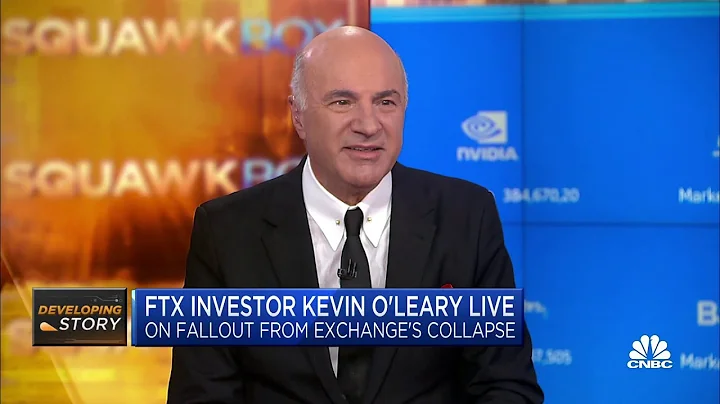David B Leary
age ~50
from Lakeland, GA
- Also known as:
-
- David Bruce Leary
- Dave B Leary
- Bruce D Leary
David Leary Phones & Addresses
- Lakeland, GA
- 3354 Streamview Ct, Bellbrook, OH 45305
- Eielson AFB, AK
- 134 Hawthorn St, San Diego, CA 92101 • 6192334415 • 6192335720
- Weirton, WV
- Watertown, NY
- Pine Valley, CA
- Lewisburg, WV
Ranks
-
Licence:Dist. of Columbia - Active
-
Date:2001
Resumes

Ceo At Turkel &Calman
view sourcePosition:
CEO at Turkel &Calman
Location:
United States
Industry:
Biotechnology
Work:
Turkel &Calman
CEO
CEO

Operations Supervisor
view sourceWork:
Leahy Landscaping
Operations Supervisor
Operations Supervisor
Interests:
Malden High School
High School Basketball Coach
High School Basketball Coach

David Leary
view source
David Leary
view source
David Leary
view source
David Leary
view source
David Leary
view source
David Leary
view sourceLawyers & Attorneys

David W Leary - Lawyer
view sourceLicenses:
Dist. of Columbia - Active 2001
Isbn (Books And Publications)

International Law and the Genetic Resources of the Deep Sea
view sourceAuthor
David K. Leary
ISBN #
9004155007



Name / Title
Company / Classification
Phones & Addresses
Principal
David Leary S Plumbing
Plumbing/Heating/Air Cond Contractor
Plumbing/Heating/Air Cond Contractor
167 Country Mnr Dr, Wilmington, OH 45177
DAVID LEARY PLUMBING, INC
Principal
Great Trail Development Company
Business Services at Non-Commercial Site · Nonclassifiable Establishments
Business Services at Non-Commercial Site · Nonclassifiable Establishments
360 Riv Rd, Beaver, PA 15009
Us Patents
-
System And Method For An Ethernet Optical Area Network
view source -
US Patent:7167648, Jan 23, 2007
-
Filed:Oct 24, 2001
-
Appl. No.:10/001524
-
Inventors:Patrick Heinz - Morrow OH, US
Christopher Scheper - Cincinnati OH, US
David Leary - Cincinnati OH, US -
Assignee:Innovative Fiber Optic Solutions, LLC - Dayton OH
-
International Classification:H04B 10/20
H04J 14/00
H04L 12/28 -
US Classification:398 58, 398 59, 370404
-
Abstract:An Ethernet Optical Area Network (EOAN) system, and methods for implementing and using such an EOAN system, are disclosed. The EOAN system may be used to improve the speed and reliability of data communications networks for small to medium-sized companies in metropolitan area networks. The EOAN system provides end-to-end Ethernet protocol, enabling professionals to have high-speed data communications in real time. The EOAN system may be generally utilized for improving data communications between branch offices, home offices, campuses, and remote sites for a wide variety of industries. The present invention preferably includes a fiber optic ring, Network Operation Center (NOC), NOC architecture components, existing client equipment, and one or more Free Space Optic (FSO) devices, microwave communication technology, and/or data switching platforms to implement high-speed Ethernet-based connections such as within a specified metropolitan area. The preferred EOAN system preferably integrates a plurality of FSO, microwave, and/or fiber optic technologies with Ethernet protocol (Fast Ethernet, Gigabit Ethernet, 10 Gigabit, etc. ) to provide data connection services.
-
Method For Operating An Ethernet Optical Area Network (“Eoan”) Over One More Metropolitan Areas
view source -
US Patent:7415209, Aug 19, 2008
-
Filed:Jan 22, 2007
-
Appl. No.:11/656340
-
Inventors:Patrick Heinz - Morrow OH, US
Christopher Scheper - Cincinnati OH, US
David Leary - Cincinnati OH, US -
Assignee:Innovative Fiber Optic Solutions, LLC - Dayton OH
-
International Classification:H04B 10/20
H04J 14/00
H04L 12/28 -
US Classification:398 58, 398 59, 370404
-
Abstract:An Ethernet Optical Area Network (EOAN) system, and methods for implementing and using such an EOAN system, are disclosed. The EOAN system may be used to improve the speed and reliability of data communications networks for small to medium-sized companies in metropolitan area networks. The EOAN system provides end-to-end Ethernet protocol, enabling professionals to have high-speed data communications in real time. The EOAN system may be generally utilized for improving data communications between branch offices, home offices, campuses, and remote sites for a wide variety of industries. The present invention preferably includes a fiber optic ring, Network Operation Center (NOC), NOC architecture components, existing client equipment, and one or more Free Space Optic (FSO) devices, microwave communication technology, and/or data switching platforms to implement high-speed Ethernet-based connections such as within a specified metropolitan area. The preferred EOAN system preferably integrates a plurality of FSO, microwave, and/or fiber optic technologies with Ethernet protocol (Fast Ethernet, Gigabit Ethernet, 10 Gigabit, etc. ) to provide data connection services.
-
Manufacture Of Nuclear Fuel Compacts
view source -
US Patent:40642046, Dec 20, 1977
-
Filed:Sep 30, 1974
-
Appl. No.:5/510390
-
Inventors:David F. Leary - San Diego CA
Roy G. Cooper - Rancho Santa Fe CA
Gary N. Miertschin - San Diego CA -
Assignee:General Atomic Company - San Diego CA
-
International Classification:G21C 2102
-
US Classification:264 5
-
Abstract:Nuclear fuel rods are manufactured utilizing a graphite flour-pitch matrix formulation containing an additive. The matrix formulation has a decreased viscosity at fabrication temperatures which permits manufacture of the fuel rods with lower fabrication pressures. Also, the matrix formulation does not cause the fuel rod to adhere or bond to the fuel element during heat treatment of the fuel rod in the fuel element. The nuclear fuel rods are suitable for use in high temperature gas cooled nuclear reactors.
-
Method Of Making A Graphite Fuel Element Having Carbonaceous Fuel Bodies
view source -
US Patent:40565840, Nov 1, 1977
-
Filed:Sep 30, 1974
-
Appl. No.:5/510282
-
Inventors:Gary N. Miertschin - San Diego CA
David F. Leary - San Diego CA -
Assignee:General Atomic Company - San Diego CA
-
International Classification:G21C 2102
-
US Classification:264 5
-
Abstract:Particulate nuclear fuel material, particulate carbon and pitch are combined with an additive which is effective to reduce the coke yield upon carbonization to mold a green fuel body. The additive may be polystyrene, a styrene-butadiene copolymer, an aromatic hydrocarbon having a molecular weight between about 75 and 300 or a saturated hydrocarbon polymer. The green fuel body is inserted in a complementary cavity within a porous nuclear fuel element body and heated in situ to decompose the pitch and additive, leaving a relatively close-fitting fuel body in the cavity.
-
Manufacture Of Nuclear Fuel Compacts
view source -
US Patent:42171741, Aug 12, 1980
-
Filed:Dec 8, 1977
-
Appl. No.:5/858677
-
Inventors:David F. Leary - San Diego CA
Roy G. Cooper - Rancho Santa Fe CA
Gary N. Miertschin - San Diego CA -
Assignee:General Atomic Company - San Diego CA
-
International Classification:G21C 2102
-
US Classification:176 82
-
Abstract:Nuclear fuel rods are manufactured utilizing a graphite flour-pitch matrix formulation containing an additive. The matrix formulation has a decreased viscosity at fabrication temperatures which permits manufacture of the fuel rods with lower fabrication pressures. Also, the matrix formulation does not cause the fuel rod to adhere or bond to the fuel element during heat treatment of the fuel rod in the fuel element. The nuclear fuel rods are suitable for use in high temperature gas cooled nuclear reactors.
-
Apparatus For Producing Microspherical Particles And Method For Operating Such Apparatus
view source -
US Patent:39579336, May 18, 1976
-
Filed:Mar 5, 1975
-
Appl. No.:5/555694
-
Inventors:Walter Egli - San Diego CA
William H. Bailey - San Diego CA
David F. Leary - San Diego CA
Richard J. Lansley - Del Mar CA -
Assignee:General Atomic Company - San Diego CA
-
International Classification:B29B 103
-
US Classification:264 14
-
Abstract:Apparatus is described for producing microspherical particles. Also described is a method for operating said apparatus. A droplet generator dispenses uniform spherical droplets into a gelling column which is sealed at both ends to prevent entry of air thereinto. A gelling liquid and a gelling gas are provided in the column, and a further gas, which is of a density lower than that of the gelling gas, is introduced to the region above the gelling gas. At the interface between the gelling gas and the further gas, the gases are withdrawn from the gelling column.
-
Method Of Making Nuclear Fuel Bodies
view source -
US Patent:40354520, Jul 12, 1977
-
Filed:Jan 21, 1975
-
Appl. No.:5/542714
-
Inventors:Dwight E. Davis - Escondido CA
David F. Leary - San Diego CA -
Assignee:General Atomic Company - San Diego CA
-
International Classification:G21C 2102
-
US Classification:264 5
-
Abstract:Particulate graphite having a particle size not greater than about 1500 microns is impregnated with a polymerizeable organic compound in liquid form. The impregnated particles are treated with a hot aqueous acid solution to at least begin the polymerization reaction and remove excess impregnant from the outer surface thereof. The treated particles are heated to complete the polymerization and then blended with particulate nuclear fuel. A nuclear fuel body is formed by joining the blend into a cohesive mass using a carbonaceous binder.
Plaxo

David Leary
view sourceStaff Sergeant at United States Army
Classmates

David Leary
view sourceSchools:
Mt. Mansfield Union High School Jericho VT 1972-1976
Community:
Jay Centerbar, Nancy Lapan, Pamela Davis

David Leary
view sourceSchools:
Jackson High School South Bend IN 1970-1974
Community:
Scott Walker, Jan Mitchell

David Leary
view sourceSchools:
Emmaus Lutheran School Alhambra CA 1974-1983
Community:
Mike Zamorano, John Surratt

David Leary
view sourceSchools:
Saint Dominic Savio High School Boys College Preparatory East Boston MA 1993-1997
Community:
Edward Tomaszewski, Charles Henry, Richard Parow, Dietrich Polynice

David J Leary
view sourceSchools:
Sacred Heart High School Holyoke MA 1954-1958
Community:
Russell Brammer, John Dick, James Kennedy, John Jr

David Leary
view sourceSchools:
Mountaineer High School Davis WV 1971-1975
Community:
Joe Massi, Patty Nelson, Diane Wilfong

David Leary (Gruver)
view sourceSchools:
McKinley Elementary School Elkins Park PA 1964-1968
Community:
Carl Polichetti, William Frankfurter

David Leary
view sourceSchools:
St. Mary's High School Westfield MA 1987-1991
Community:
Eileen Lynch, Dennis Cowger, Sarah Moodie, Louise Orellana, Anita Glynn, Tom Gates, Renee Lucia, Marie Lancto, Ali Bruhm, Chris Avery, Sandra Bass
Youtube
Myspace
Googleplus

David Leary
Work:
University of Virginia - Web/Database Developer
Education:
Virginia Commonwealth University
Relationship:
In_a_relationship

David Leary

David Leary

David Leary

David Leary

David Leary
Work:
Norfolk Naval Shipyard - Instrument Mechanic (2011)
Education:
Oscar Smith High School - General

David Leary

Leary David
view source
David Leary
view source
David O Leary
view source
David O Leary
view source
David O Leary
view source
David O Leary
view source
David O Leary
view source
David O Leary
view sourceFlickr
Get Report for David B Leary from Lakeland, GA, age ~50



![Denis Leary on Coffee [Lock N Load] Denis Leary on Coffee [Lock N Load]](https://i.ytimg.com/vi/-f_dxLiuXuw/hqdefault.jpg?sqp=-oaymwEcCOADEI4CSFXyq4qpAw4IARUAAIhCGAFwAcABBg==&rs=AOn4CLA2AnrrebXZBTHPNG_KsJN_Vy29VQ)














